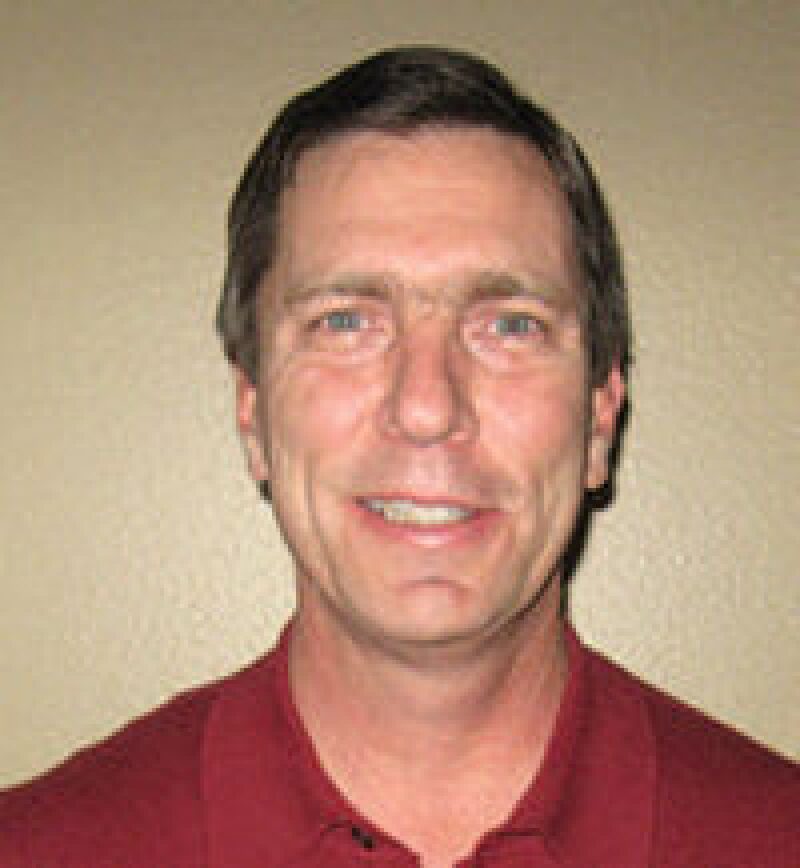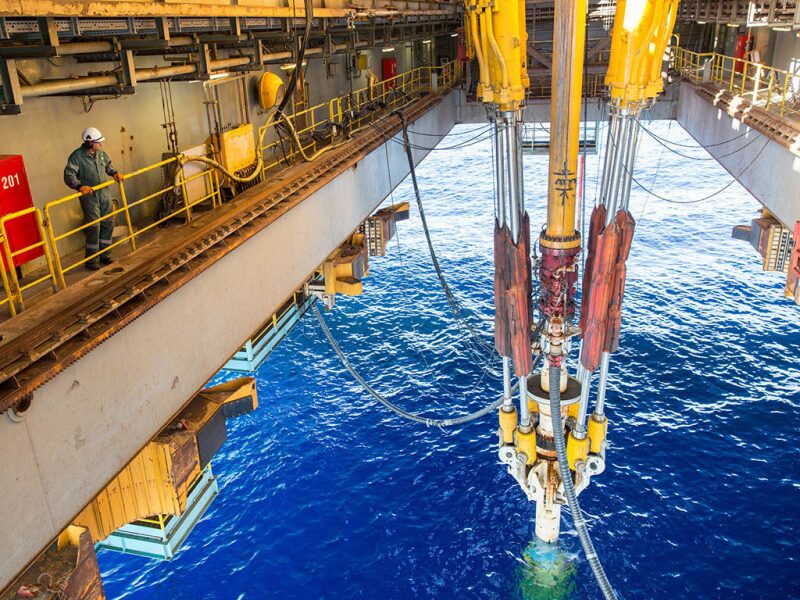How important do you think deepwater operations are to the oil and gas industry?
LE: At the end of 2009, deepwater production was approximately 5 million BOPD of the 24 million BOPD coming from offshore fields. Deep water continues to be an area where large fields can be found and produced with an attractive economic return on investment. The ability of the industry to explore and produce fields in up to 10,000‑ft water depth and lower costs will continue to drive exploration and continued developments.
DH: Deepwater operations are where the new technologies are being developed for advanced stress loads and pressures that need to be addressed. The technical challenges, well costs, and, most importantly, the higher requirements for meeting government environmental regulations are key factors to be addressed.
JT: Deep water will play a key role in offsetting decline in production from the shallow-water areas.
How have deepwater operations changed over time?
LE: The world water depth record for drilling was deepened to 6,448 ft in 1983 offshore the US east coast. The current water depth record for a well is 10,194 ft. The world record for moored rigs deepened from 3,691 ft in 1988 to 8,951 ft in recent years. In 1983, there was only one rig in the world capable of drilling in 7,500-ft water depths. There are currently over 125 rigs capable of drilling in over 7,500-ft water depths, with another 81 under construction, on order, or planned. Tubing size has also increased for many wells, from 27/8-in. and 3½-in. in the early ’80s to more commonly 4½-in. and 5½-in. today in deep water. In recent years, intelligent completions are also being installed that allow controlling production from multiple zones at the same time.As developments moved into deep water, tension-leg platforms (TLPs) and spars are used instead of conventional bottom-supported platforms. The first TLP was installed in 1984 at a 486-ft water depth. The water depth record for TLPs is currently 4,674 ft.
DH: Most of technology advancements have led to automation and improvements for deepwater drilling well containment. The Macondo incident in 2010 definitely resulted in a surge in engineering technology and engineering verifications that have to be put in place for risk control and safety for people and the environment.
JT: Operations have evolved continuously in response to demands to explore plays in progressively deeper water. Learning proceeds by trial and error. The pace of change is dictated by the economics and is ultimately linked to oil prices. In 1974, deep water was regarded as being in 800 to 1,000 ft of water; now the limits are an order of magnitude greater. Key technologies enabled the limits to be progressively extended, aided by developments in analytic tools and increases in computing capability. Station-keeping systems have been refined, high-accuracy satellite navigation technology became available, marine risers and their connectors were developed with the increased strength needed to support the drilling and environmental loads, and control systems have enabled effective communication with increasingly complex subsea hardware.
Where do you foresee attractive future deepwater exploration and production plays will be?
LE: The deepwater presalt discoveries in Brazil are the largest in the industry in decades, onshore or offshore. The industry recently participated in a presalt licensing round offshore Angola. Subsequent to the licensing round, an Angolan presalt discovery was recently announced. The subsalt Paleogene play continues in the Gulf of Mexico (GOM), where several discoveries have been sanctioned for development. There has been a lot of exploration activity in the GOM subsalt Paleogene, so it is encouraging to start to see the sanctioning of developments. Several major operators are also looking at deepwater exploration in the Arctic.
DH: Much of Latin America is unexplored for offshore drilling. Additional areas that are up and coming are the northwestern waters offshore Australia and southeastern waters offshore Africa.
JT: Outside the big four regions—US GOM, Brazil, Angola, and Nigeria—we can expect to see deepwater gas plays opening up in the eastern Mediterranean and Black Sea. In addition, there will be continued extension of the plays along west African and South American coasts. Other areas will include southeast Asia, east Africa, and offshore India. In the long term, increasing scarcity will eventually increase pressure to explore off the US east and west coasts.
How have government regulations and recent events affected deepwater operations and future deepwater exploration?
LE: Since the Macondo incident in the GOM, the US Bureau of Ocean Energy Management (BOEM) and the US Bureau of Safety and Environmental Enforcement (BSEE), the oil and gas regulatory arms of the US government, have issued numerous new requirements for the industry. The BOP stack must now be pulled to surface after drilling each well to be retested. It is possible to keep a BOP stack on the same well for potentially an indefinite period of time as long as it continues to function. Yet, if you drill a single, shallow well that takes 30 days, you would still have to pull and retest the BOP stack at the surface. In wake of the Macondo incident, industry has responded by forming the Marine Well Containment Company for GOM operations and Subsea Well Response Project for operations elsewhere. These two organizations have designed and built equipment for industry use for subsea well intervention if another incident similar to the Macondo blowout was to ever occur again.
DH: Government regulations in the USA have significantly slowed down licensing approvals for offshore deepwater drilling, but they have brought about rapid improvements for engineering with risk and environmental management. Much of these types of improvements have been ongoing in the North Sea; but, now, environmental concerns are shared worldwide, with advanced regulations and controls among many nations. There have been many regulations added, and many are being introduced for quality and safety requirements to meet with keeping the world’s seas safe from harm. We must learn to provide care for what nature gives us and what we will extend to future generations.
JT: Recent events have challenged some long-held tacit assumptions, such as spending several months to drill a relief well is an acceptable response to dealing with a blowout. Social pressures have forced development of more effective and timely response measures, such as capping and containment systems. These advances can only be to the long-term benefit of the industry. The real environmental risks lie in those regions that are relatively weakly regulated as they are more exposed to the adverse consequences of operators lacking competence and resources. An interesting recent development is the positive role of the insurance industry in driving standards up in areas where the regulator lacks experience.
What technology do you consider a deepwater game-changer—past, present, or future?
LE: In the past, top-drives and the use of synthetic-based mud systems. Top-drives increased efficiency by reducing the number of connections and also allowed back-reaming of the hole. Synthetic-based mud systems increased efficiency by allowing the use of polycrystalline diamond compact (PDC) bits, increased safety by minimizing the potential for formation of hydrates, and allowed high-angle, longer-reach wells to be drilled with increased wellbore stability and lower drag forces. Rotary steerable drilling systems allowed simultaneous drilling and under-reaming of directional wells.
DH: One of the key leading engineering controls for well drilling is managed-pressure drilling. This is an ongoing concern—the control of wellbore pressures and well containment of drilling fluids and reservoir fluids. Over the past years, technology has increased in these areas. There has been an increase in computerized technology to model probabilistic drilling processes. These models can take real-time information from a well location and develop a forensic approach to present well conditions and drilling characteristics to yield insight for the future. Advanced mathematical models can be introduced to find alternatives or mitigating solutions. These models help with engineering and can add to risk management assessment and cost analysis for better financial control.
JT: Looking forward, there are indications of hitting practical limits for conventional marine riser technology and rig design at around 10,000 ft. Further depth increments may not be practically achievable without a radical rethinking of the technologies involved. Dual-gradient drilling is likely to play an increasingly important role. But game-changing technologies such as the Reelwell Drilling Method, involving concentric drillstring systems combined with novel umbilicals, may provide the key that enables these barriers to be pushed back even further.
Can you advise YPs considering deepwater operations as a career?
LE: Deepwater operations get a lot of management attention. Be ready for the spotlight. You need to understand the goals and objectives of wells and understand why things are done a particular way in order to improve things and ensure operations are proceeding properly. Be inquisitive, ask questions. You can’t ever communicate too much. Spend the extra time to document projects you’re working while you do them. There never seems enough time to document things after a project is done, and you will constantly use end-of-well/project reports since your memory will fade. Learn project management skills since most deepwater operations are high-cost operations that need a superior level of project management to ensure the correct tasks are done in the correct sequence and completed at the necessary time. There are opportunities in drilling, completion, and subsea equipment engineering; offshore drilling and completion operations roles; and supervisory positions for all these roles.
DH: I suggest selecting an area of interest and becoming educated and professional within it. This will require real-time experience working offshore and around the equipment being used. Combining classroom ability and real-time experience will help assure quality of work applications. Like any other profession, there are requirements to be met through experience, such as responsibility, legal requirements, maturity, accountability, willingness to share technology and support to team members, safety, environmental and health safeguards, work experience, training, and many other attributes.
JT: A sound engineering education is an essential foundation. Coupling education with natural inquisitiveness and a commitment to technical excellence is all that is required. My advice is to take the time to understand the physics (there are no short cuts), work from first principles, and make time to update your knowledge by reading technical papers and journals. Above all, always remain focused on technical excellence.
Any final thoughts or comments?
LE: I have been very fortunate to work in deep water almost my entire career. It has been very rewarding and humbling. I’ve learned a lot from rig-based personnel. I used to work with a company man who would ask tough questions about upcoming operations and then say, “I’m just planting a seed.” We need to carefully listen to conversations between the office, field, operator, and service company to ensure we think of all the possibilities and develop the best plan. Remember, your great idea is not valuable unless the field can implement it safely.
DH: New horizons in deep water explore an abyss that shows promise to meet our present energy needs. Our industry will call upon new generations of engineers and technologists to help with our search. As a collective industry made up of people with many types of knowledge and experience, we can meet our goals safely and in an environmentally friendly manner.
JT: The elephant in the room, ignored in the rush to judgment and blame over recent disasters, is the involvement of human factors as a probable contributory factor. As an industry, we have to quickly learn lessons from others, notably aviation, regarding the importance of human factors. Progress will require education and training of our workforce to recognize our cognitive biases and illusions. This will mean developing our nontechnical skills in situation awareness, decision-making, leadership, communication, teamwork, and stress management as countermeasures.




